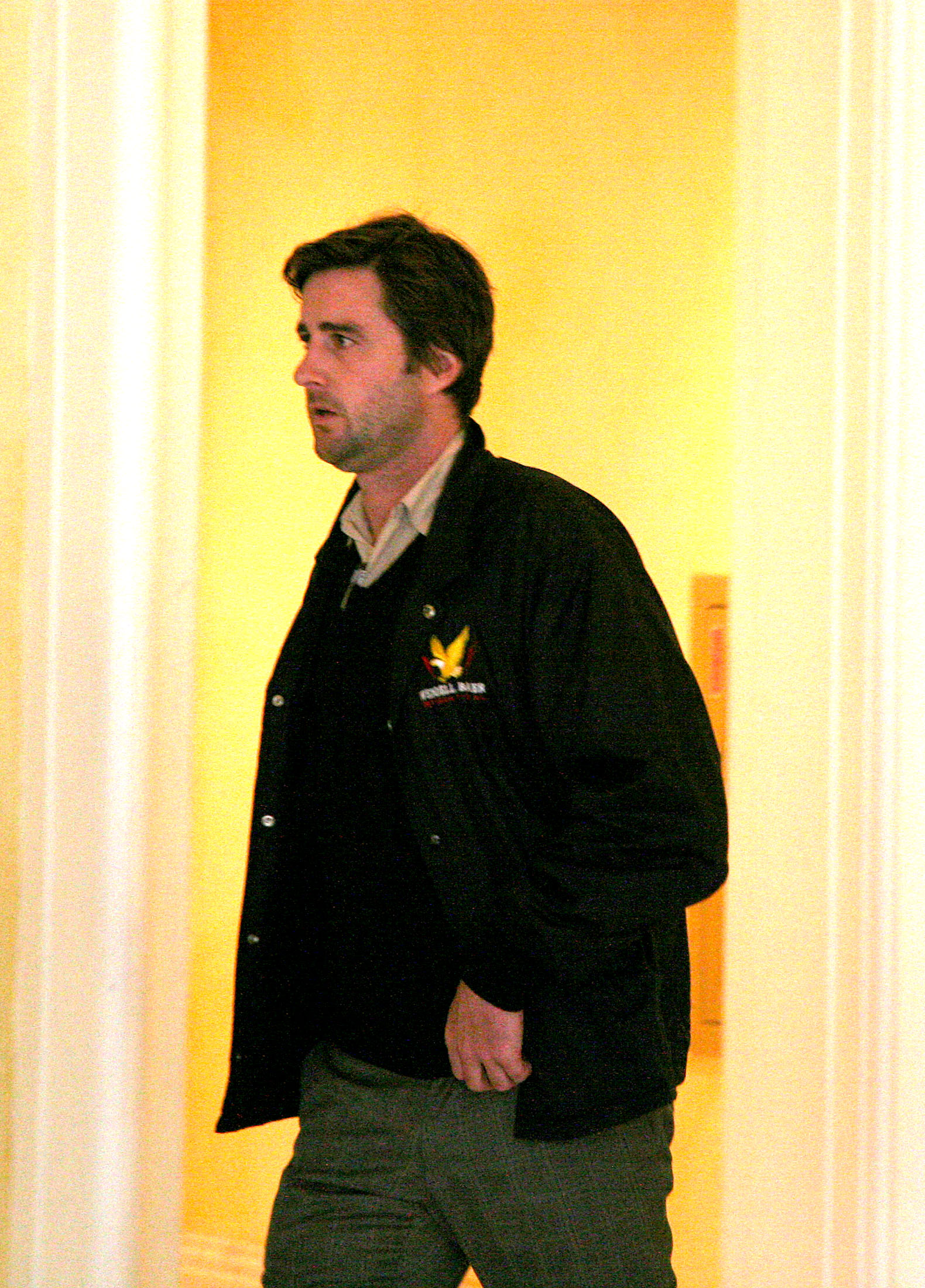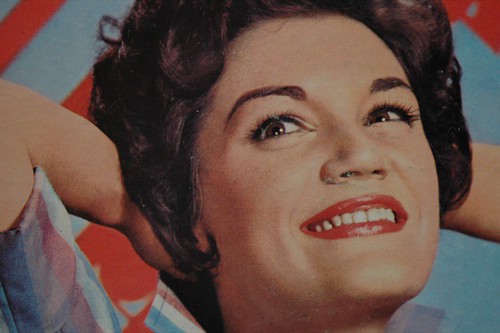
Connie Francis, a dominant force in American pop music whose honeyed mezzo-soprano captivated audiences in the 1950s and 1960s, passed away on July 16, 2025, in Pompano Beach, Florida, at the age of 87. Her life was a remarkable tapestry woven with unprecedented professional success, pioneering international stardom, and profound personal tragedies that she confronted with resilience, even advocating for others who faced similar adversities. In her final years, she experienced an unexpected cultural resurgence, finding a new generation of admirers through a forgotten 1962 song that went viral on social media.
Born Concetta Franconero, Francis became a global phenomenon, achieving a level of chart success and international acclaim that few artists of her era could rival. She was the first woman to top the Billboard singles chart and her pursuit of non-Anglophone audiences cemented her status as a hugely popular international star. Her career, while initially meteoric, also provided a blueprint for other artists seeking global reach, and her story is one of unwavering dedication to her craft, even as personal storms raged.
This in-depth look into the life of Connie Francis will trace her journey from her humble beginnings in New Jersey to her ascent as a pop icon, detailing the pivotal moments, challenges, and triumphs that defined her extraordinary path. We will explore how her distinctive voice and tireless work ethic propelled her to the forefront of the music world, setting the stage for a legacy that continues to resonate across generations, culminating in a surprising reintroduction to popular culture just months before her death.
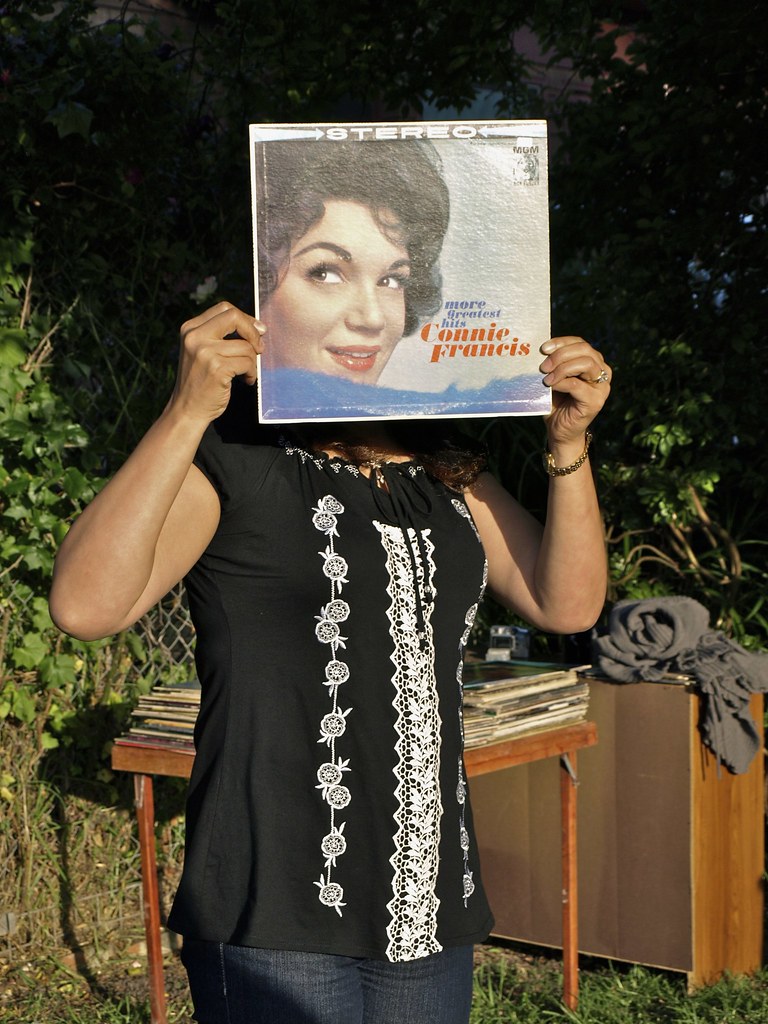
1. **Early Life and Formative Influences**Connie Francis was born Concetta Franconero on December 12, 1937, in the Ironbound neighborhood of Newark, New Jersey, into a working-class Italian-American family. Her early years were spent in Crown Heights, Brooklyn, before her family relocated to Belleville, New Jersey. Growing up in a diverse Italian-Jewish neighborhood, she developed an unexpected fluency in Yiddish, a skill that would later inform her unique recording choices and broaden her appeal.
From a very young age, Francis’s father, George Franconero Sr., recognized and vigorously encouraged her musical talents. She began performing regularly at local talent contests, pageants, and neighborhood festivities, singing and playing the accordion. These early experiences provided a crucial foundation for her stage presence and vocal development, though the accordion itself would soon become a point of contention.
In December 1950, while rehearsing for an appearance on Arthur Godfrey’s Talent Scouts, Francis received pivotal advice from Godfrey himself. He suggested she change her stage name to Connie Francis, deeming it easier to pronounce for a broader audience. Critically, Godfrey also advised her to abandon the cumbersome accordion, a suggestion she enthusiastically embraced, having grown to dislike the heavy instrument. This period also saw her taking on work as a singer on demonstration records, introducing unreleased songs to established artists.
After attending Newark Arts High School, Francis graduated as salutatorian from Belleville High School in 1955. Throughout these formative years, she continued to hone her performance skills, appearing on television shows such as NBC’s variety show Startime Kids between 1953 and 1955, alternately using the names Concetta Franconero and Connie Franconero. These early endeavors showcased her developing talent and laid the groundwork for her eventual professional career.
Read more about: Remember the ’90s? Here Are 12 Moments That Shaped the Decade and Still Echo Today!
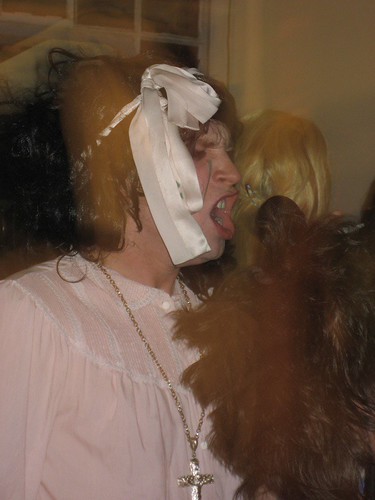
2. **Navigating Early Career Setbacks**The year 1955 marked a significant turning point as Startime Kids went off the air, prompting Francis and her father, along with manager George Scheck, to finance a recording session. Their goal was to produce four songs that they hoped would secure a contract with a major record company. This ambitious move eventually led to a recording contract with MGM Records, though the circumstances of its acquisition were rather serendipitous.
MGM’s decision to sign Francis was not based on her vocal prowess alone, but rather on a peculiar coincidence: one of the tracks she had recorded, “Freddy,” shared the name of company executive Harry A. Meyerson’s son, who saw it as a nice birthday gift. Released as her debut single, “Freddy” proved to be a commercial failure, a fate that would befall her next eight solo singles as well. These early years with MGM were marked by consistent disappointment on the charts, testing Francis’s resolve.
Despite these initial commercial failures as a solo artist, Francis’s undeniable vocal talent did not go unnoticed. She was hired for behind-the-scenes work, providing the “singing” voices for actresses in several films. In 1956, she recorded the vocals for Tuesday Weld’s scenes in the movie Rock, Rock, Rock!, and in 1957, she lent her voice to Freda Holloway in the Warner Bros. rock and roll movie Jamboree.
Her fortunes began to shift modestly in the fall of 1957 when she achieved her first minor chart success. A duet single with Marvin Rainwater, “The Majesty of Love,” with “You, My Darlin’ You” as the B-side, peaked at number 93 on the Billboard Hot 100. This collaboration eventually sold over one million copies, offering a glimmer of hope that mainstream success might finally be within reach, just as her contract with MGM Records was nearing its end.
Read more about: Beyond the Blackout: 12 Famous Actors Who Navigated Failed TV Pilots on Their Path to Stardom
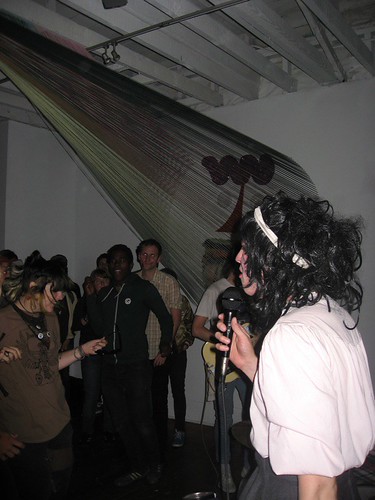
3. **The Breakthrough: “Who’s Sorry Now?”**The modest success of “The Majesty of Love” arrived too late to sway MGM Records, who informed Francis that her contract, which stipulated ten solo singles and one duet, would not be renewed after her final solo release. Faced with this impending career setback, Francis seriously contemplated a future outside of music, considering a scholarship offer to study medicine at New York University.
However, a crucial recording session on October 2, 1957, with Joe Lipman and his orchestra, would irrevocably alter her trajectory. Against her strong personal reservations, Francis’s father insisted she record a cover of the 1923 standard “Who’s Sorry Now?” He was convinced that the song, already familiar to adults, could appeal to teenagers if given a contemporary arrangement. This paternal insistence led to a heated argument and significant delays during the session.
Francis herself disliked the song and consciously stalled, hoping to run out of recording tape before having to perform it. Yet, her father remained unyielding, and ultimately, with only seconds remaining on the tape, she recorded the track. Initially, the single, like its predecessors, seemed destined for obscurity, confirming Francis’s own predictions of its failure.
But fate intervened on January 1, 1958, when “Who’s Sorry Now?” debuted on Dick Clark’s American Bandstand. Francis recounted watching the show, hearing Clark introduce a new girl singer, and then, to her astonishment, hearing her own song. The feeling was, as she described it, “cosmic.” Her performance of the song on The Saturday Night Beechnut Show in February further propelled its visibility. By mid-year, over a million copies had sold, launching Connie Francis into worldwide stardom. In April 1958, it reached number 1 in the UK Singles Chart and number 4 in the United States, cementing her breakthrough and renewing her contract with MGM. She was also voted “Best Female Vocalist” by American Bandstand viewers for four consecutive years.
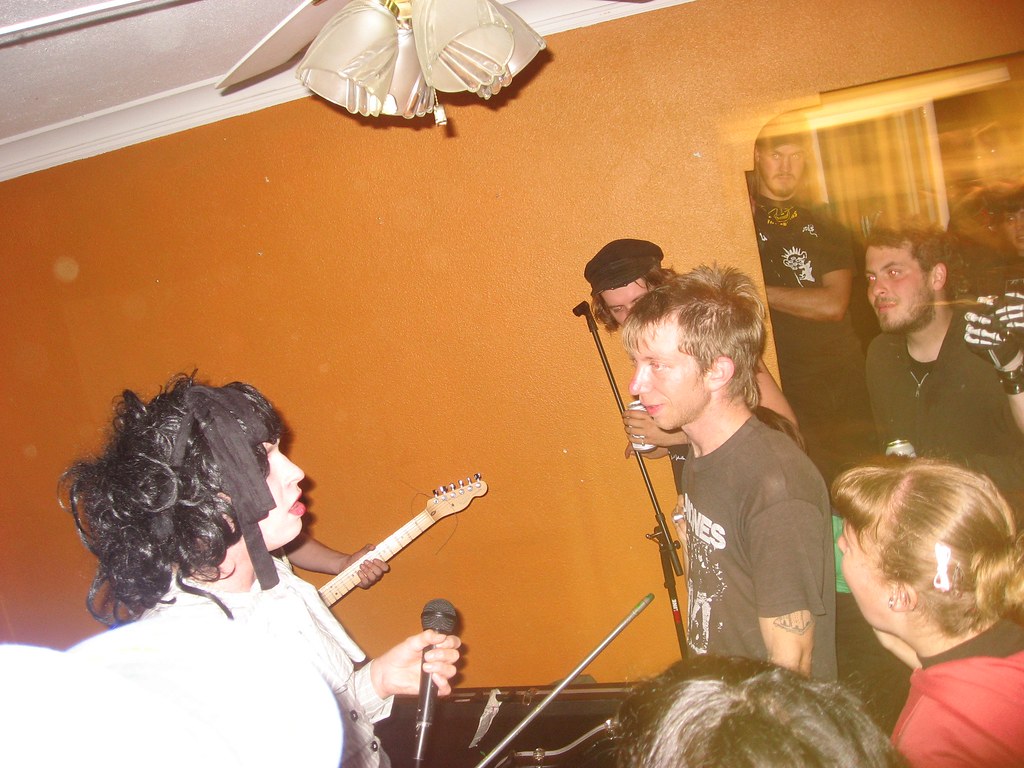
4. **Sustained Success and “Stupid Cupid”**The immense success of “Who’s Sorry Now?” prompted MGM Records to renew Francis’s contract, placing her in the challenging position of needing a strong follow-up hit. Her subsequent singles, “I’m Sorry I Made You Cry” and “Heartaches,” performed with less impact, with the former stalling at No. 36 and the latter failing to chart entirely. This period underscored the pressure to maintain momentum in the fickle world of popular music.
In her search for new material, Francis met the nascent songwriting duo Neil Sedaka and Howard Greenfield. They presented her with a series of ballads, but Francis found them too intellectual and sophisticated for the burgeoning youth market she aimed to capture. She began writing in her diary as they played, and her refusal to let them mine it for material inadvertently inspired Sedaka’s own breakthrough hit, “The Diary.”
Recognizing her preference for something more lively, Greenfield urged Sedaka to play a song they had written that morning with The Shepherd Sisters in mind, despite Sedaka’s concern that Francis would be insulted. This song was “Stupid Cupid.” Francis overheard their exchange, recounting Sedaka’s protest, “‘She’s a classy singer. She’ll be insulted!’” but she insisted they play it. When Sedaka finished the first 12 bars, Francis immediately recognized it as her next hit, jumping up and down with enthusiasm.
“Stupid Cupid” proved to be precisely the energetic, youthful sound Francis needed. It soared to number 14 on the Billboard chart and became her second number 1 hit in the UK, restoring crucial momentum to her chart career. This success solidified her ability to deliver hits beyond the ballad format, showcasing her versatility and keen ear for popular appeal. She would go on to achieve U.S. top 40 success an additional eight times during the remainder of the 1950s, through a blend of covering older songs like “My Happiness” (number 2) and “Among My Souvenirs” (number 7), and releasing original compositions.
In 1959, Francis further demonstrated her commercial power by earning two gold records for a double-sided hit: “Lipstick on Your Collar” (number 5) and “Frankie” (number 9). Her consistent output and ability to connect with a diverse audience of teenagers and adults alike ensured her place as a leading vocalist of the era, setting the stage for even broader international recognition.

5. **Pioneering International Appeal**Inspired by another prescient idea from her father, Connie Francis embarked on a groundbreaking venture in August 1959, traveling to London to record an Italian album at EMI’s renowned Abbey Road Studios. This decision was largely driven by her father’s belief that, following the war, it was important to “make friends with our enemies, especially Japan and Germany,” and to sing in those languages if she ever made it big.
The resulting album, titled Connie Francis Sings Italian Favorites, was released in November 1959. Its success was immediate and profound, particularly among Italian Americans and in countries with large Italian populations. The album spent an impressive 81 weeks on the charts, peaking at number 4, and became Francis’s most successful album to date. The single “Mama,” extracted from the album, reached number 8 in the United States and number 2 in the United Kingdom, illustrating the burgeoning international demand for her music.
This triumph initiated a prolific period of cross-cultural recording for Francis. Between 1960 and 1964, she recorded seven more “favorites” albums, encompassing Jewish, German, and Irish music, among others. Her 1960 album of Jewish music, featuring songs in Yiddish and Hebrew like “Tzena, Tzena, Tzena” and “Hava Nagila,” was particularly significant, with some immigrants viewing it as validating the acceptance of the Jewish community in American society.
Francis became one of the first American artists to regularly record in multiple languages, setting a precedent that would be followed by numerous other major British and American stars, including Wanda Jackson, Cliff Richard, and even The Beatles. She consciously built on her reflections that language barriers in European countries, particularly Germany, had previously hindered her airplay. This strategic approach led to immense success outside the United States, where her songs topped charts in numerous countries and she was voted the number 1 singer in over 10 nations. In 1960, she earned the unprecedented honor of being named the most popular artist in Europe, the first non-European to receive such an award.
Her commitment to a multi-language approach was exemplified by her April 1960 recording of “Everybody’s Somebody’s Fool,” which became the first single by a female artist to top the Hot 100. For this song, veteran lyricist Ralph Maria Siegel penned German lyrics, “Die Liebe ist ein seltsames Spiel” (“Love is a Strange Game”), which Francis recorded despite some initial friction with MGM executives. This German version peaked at number 1 in West Germany, a feat she repeated with “Paradiso” in 1962 and “Barcarole in der Nacht” in 1963. Over the years, she expanded her recording portfolio to 15 languages, often learning the songs phonetically, showcasing her extraordinary dedication to connecting with a global audience. Her immense popularity overseas even led to television specials in countries like Great Britain, Germany, Spain, and Italy, and remarkably, her music found reception even in Iron Curtain countries, a testament to its universal appeal.
Read more about: The Curated Canvas: Inside Ralph Lauren’s Exclusive Garage of Vintage Race Cars and Modern Exotic Hypercars
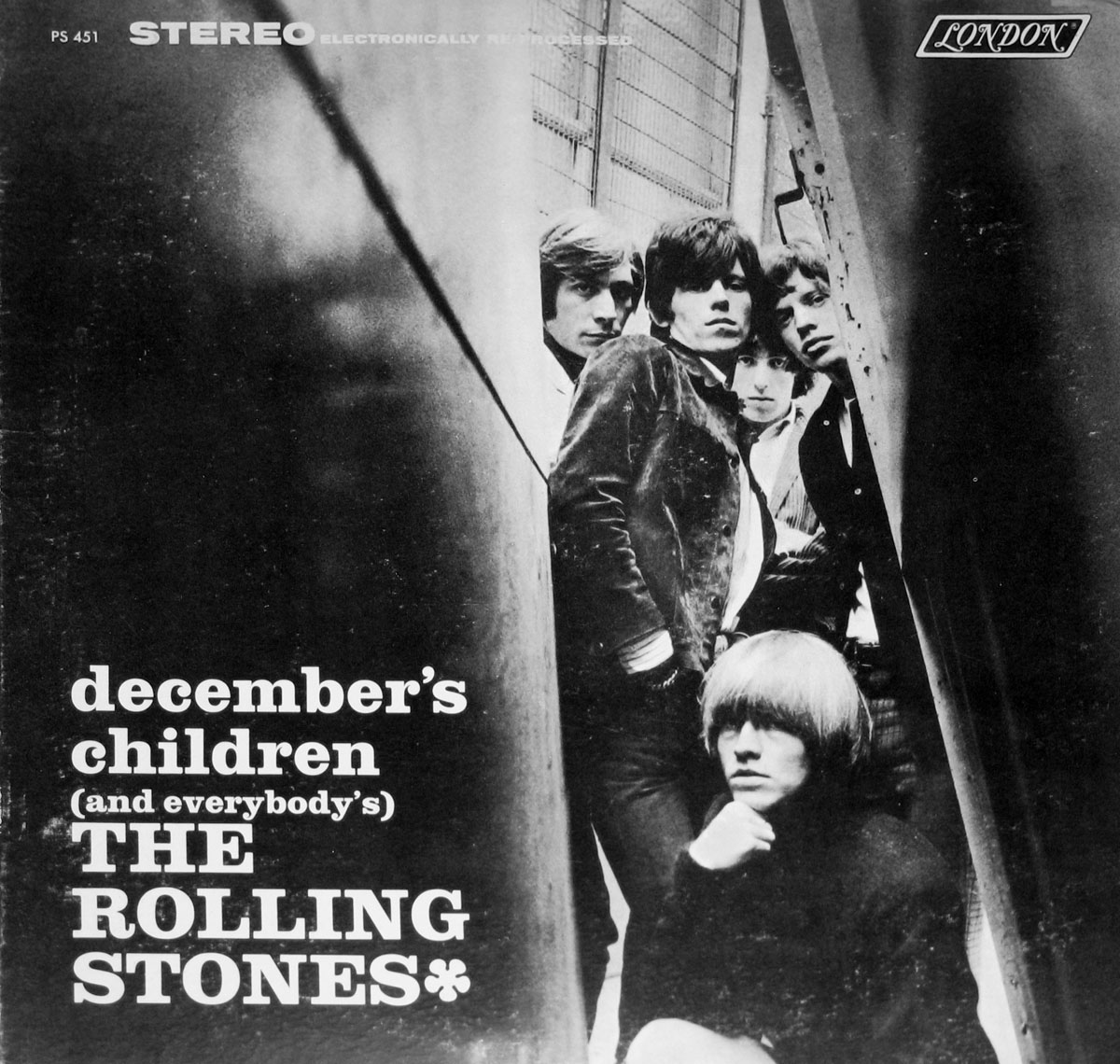
6. **Hollywood and “Where the Boys Are”**Amidst her phenomenal recording success, Connie Francis also made a significant mark in Hollywood, particularly with the 1960 comedic film “Where the Boys Are.” The title song, which she sang, became her signature tune and one of her most enduring hits, rising to number 4 on the Billboard Hot 100 in early 1961. The film itself was not just a vehicle for her music but also a cultural touchstone.
“Where the Boys Are” introduced and popularized the concept of spring break, portraying Fort Lauderdale, Florida, as the ultimate destination for college students on their spring vacation. The movie’s immense popularity transformed the once sleepy town into a bustling hotspot, indelibly linking Francis with this emergent youth phenomenon. The film is also widely recognized as a precursor and significant influence on the later “beach party” genre of movies.
Francis’s role in “Where the Boys Are” showcased her on-screen charisma and further cemented her image as a teen idol. Her presence in the film not only provided a tremendous boost to Fort Lauderdale’s fame, spurring tourism for decades, but also demonstrated her crossover appeal beyond the recording studio. She appeared in a number of other films for MGM, including “Follow the Boys,” further diversifying her entertainment portfolio.
Neil Sedaka, who co-wrote “Where the Boys Are” along with Howard Greenfield, spoke admiringly of Francis’s vocal qualities: “What struck me was the purity of the voice, the emotion, the perfect pitch and intonation. It was clear, concise, beautiful. When she sang ballads, they just soared.” This unique vocal ability was central to her enduring appeal, whether on record or on screen, and made the title song of her most famous film an instant classic.
Read more about: The Lost Luminaries: Unearthing 15 Unsung Stars of 1960s Cinema and What Became of Them

7. **Adapting to Evolving Music Trends**Between 1958 and 1964, Connie Francis stood as the preeminent female singer in the United States, with her popularity and consistent chart presence rivaled only by Brenda Lee. Her ability to deliver a string of top-ten hits, including a third number-one hit in 1962 with “Don’t Break the Heart That Loves You” (making her the first woman to achieve three number-one singles on the Billboard Hot 100), granted her unprecedented freedom from MGM to select her own songs for recording.
However, the mid-1960s brought a seismic shift in the music industry, largely driven by the British Invasion and other emerging music trends. Francis’s chart success on Billboard’s Hot 100 began to wane after 1963. Her final top-ten hit, “Vacation,” which she co-wrote, was released in 1962. While she continued to place singles in the top 40 on the U.S. Hot 100 through 1964, with her cover of “Be Anything (but Be Mine)” being her last entry, the mainstream pop landscape was undeniably changing.
Despite the decline in her Hot 100 presence, Francis remained a formidable concert draw, showcasing her enduring appeal as a live performer. She shrewdly adapted her musical style, transitioning to a more mature sound that found success on Billboard’s Adult Contemporary Charts and even occasionally charted on Billboard’s Country Charts. This strategic pivot allowed her to maintain a dedicated fan base and commercial viability even as the youth market gravitated toward different sounds.
Her lasting chart success in the U.S. continued until her contract with MGM Records expired in 1969, marking the end of an extraordinary run with the label that had launched her to stardom. Even as her American chart footprint evolved, her international popularity remained robust, with appearances at prestigious events like the Sanremo Festival in Italy in 1965 and 1967, underscoring her global stature and ability to navigate changing musical tastes and cultural landscapes.
Read more about: Decoding the Oracle: Warren Buffett’s Enduring Habits and Investment Principles for Long-Term Success

8. **The 1974 Assault and Its Profound Aftermath**Connie Francis, having found a renewed vigor for performing, embarked on a comeback in 1974, a period intended to mark her return to the spotlight. However, this promising resurgence was brutally interrupted by a harrowing personal tragedy that would forever alter the course of her life and career. While appearing at the Westbury Music Fair in New York, on the night of November 8, 1974, Francis was subjected to a violent attack at knifepoint in her room at the Jericho Turnpike Howard Johnson’s Lodge in Jericho, New York. She was beaten, raped, and then tied to a chair, her ordeal nearly culminating in suffocation beneath a heavy mattress her assailant had thrown upon her.
The emotional and psychological toll of this incident was immediate and devastating. Francis described her attacker as “obviously drugged” and noted his chilling remarks about “God punishing him because he was going to kill me.” Despite an initial arrest of a 19-year-old hotel guest, the perpetrator of this horrific crime was never apprehended. The violation left Francis profoundly traumatized, plunging her into a deep depression. She largely withdrew from public life, rarely venturing from her home in Es Fells, New Jersey, and grappling with her pain by reportedly taking as many as 50 Darvon pills a day.
Beyond the personal anguish, the incident sparked a landmark legal battle. Francis courageously sued the motel chain for its failure to provide adequate security, arguing that their negligence had directly contributed to her assault. This lawsuit culminated in a reported $2.5 million judgment, an amount equivalent to over $14.6 million in 2024, making it one of the largest such judgments in history. More significantly, her case served as a catalyst for systemic change, leading to crucial reforms in hotel security protocols across the industry, thus transforming a personal tragedy into a broader legacy of advocacy for safety.
Read more about: Sara Jane Moore, Who Attempted to Assassinate President Ford, Dies at 95

9. **Temporary Return and the Loss of Her Voice**Four years after the traumatic events of 1974, Francis made a tentative return to the recording studio in 1978, a testament to her enduring artistic spirit despite the immense personal challenges she faced. This period saw her record an album titled *Who’s Happy Now?*, a collection that bravely explored new musical directions. Notably, the album featured a disco rendition of “Where the Boys Are,” a bold reinvention of her signature tune that reflected the evolving musical landscape of the late 1970s.
The sessions for *Who’s Happy Now?* were creatively fertile, yielding additional songs that Francis subsequently recorded in multiple languages, including Italian, Spanish, Japanese, and German. These multilingual endeavors resulted in distinct album releases, such as *Connie Francis en Español* for the Spanish market and *Was ich bin* (meaning “What I Am”) for Germany. Distributed through United Artists Records, these albums and their derived singles represented a determined effort by Francis to reclaim her musical career and reconnect with her diverse international fanbase.
However, this hopeful return was tragically cut short. Following the completion of these recordings, Francis underwent nasal surgery. The procedure, intended to address a physical ailment, inadvertently led to a complete loss of her singing voice. This devastating setback forced her into another period of silence and intense medical struggle. She endured three more operations in a desperate attempt to regain her vocal abilities, but it would be three arduous years before she could sing again, casting a profound shadow over her artistic future.
Read more about: Unveiling 13 Global Icons: The Most Famous Personalities Shaping Our World in 2025

10. **The Murder of a Brother and a Resurgent Spirit**Just as Connie Francis was slowly beginning to recover her voice and contemplate a renewed path in music, another profound tragedy struck in 1981, adding a layer of unbearable grief to her already tumultuous life. Her younger brother, George Franconero Jr., to whom she was exceptionally close, was brutally shot to death outside his New Jersey home. George, an attorney, had been a vocal opponent of organized crime, having testified against mob activity and, with remarkable courage, refused offers of witness protection. His murder was a stark, horrifying consequence of his principled stand.
His death, while deeply agonizing, also served as a catalyst for Francis, jolting her out of the isolation and self-pity that had consumed her since the 1974 assault. She later reflected on this pivotal moment, noting that the cumulative weight of her experiences had left her “angry, and angry is often a good catalyst.” This newfound resolve spurred her to take active responsibility for her extended family, transforming her grief into a powerful motivation for action and a renewed commitment to life.
With a spirit hardened by adversity, Francis once again returned to the recording studio in 1981. This period saw her cut new tracks such as “Comme ci, comme ça” and “I’m Me Again,” the latter of which became the title track of an album symbolizing her resilience and reassertion of identity. “I’m Me Again” would mark her final single to chart on the Adult Contemporary listings, a poignant testament to her enduring appeal even amidst personal strife. She also bravely resumed live performing, making a notable appearance on the *American Bandstand 30th Anniversary Special* and, with remarkable courage, even graced the stage in the very town where she had been violently assaulted years prior, a powerful act of defiance against her past trauma.
Read more about: Patti Smith: The Enduring Legacy of the Punk Poet Laureate
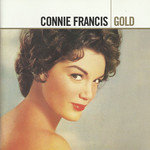
11. **Navigating Mental Health and Finding Her Voice in Advocacy**Connie Francis’s renewed success and public appearances following her brother’s murder, while inspiring, proved to be fleeting. Her journey into the 1980s became intertwined with profound struggles concerning her mental health, further challenging her ability to maintain a consistent career trajectory. She was diagnosed with manic depression, a condition she would later assert was a misdiagnosis, alongside a concurrent misdiagnosis of attention deficit disorder. These erroneous diagnoses led to her being prescribed medications that, in her own words, transformed her into “a zombie,” illustrating the profound and often damaging impact of mismanaged mental health care.
The complexities of her mental state resulted in multiple commitments to psychiatric hospitals, a difficult and often disorienting period in her life. The depths of her despair were tragically underscored by a suicide attempt in 1984, which left her in a coma for several days. Through intensive therapy and self-reflection, Francis and her medical team eventually arrived at a crucial understanding: her mental health issues were not manic depression but rather stemmed from post-traumatic stress disorder (PTSD), primarily rooted in the horrific events of 1974. This accurate diagnosis was a turning point, offering clarity and a path toward more effective healing.
In the midst of these intensely personal battles, Francis channeled her experiences into powerful advocacy. Recognizing the profound impact of violent crime and the stigma surrounding mental health, she became a vocal champion for the rights of victims and for greater awareness and understanding of mental illness. This public stance transformed her private suffering into a platform for helping others, adding a significant dimension to her public persona beyond her musical achievements.
The year 1984 also marked another significant milestone in her life: the publication of her autobiography, *Who’s Sorry Now?* This candid and unflinching account of her life, detailing both her extraordinary triumphs and her devastating personal setbacks, resonated deeply with readers and quickly became a *New York Times* bestseller. The book not only offered fans a deeper insight into her journey but also served as another powerful act of reclaiming her narrative and advocating for those who had faced similar adversities.
Read more about: 12 Actionable Psychological Habits for Building Unshakeable Resilience: Insights from the Science of Mind and Behavior

12. **A Sustained Later Career and Renewed Recognition**Emerging from a period defined by personal recovery and advocacy, Connie Francis once again resumed her recording and performing career in 1989, demonstrating an indomitable spirit and a profound dedication to her craft. This new chapter saw her collaborate with Malaco Records, resulting in a double album titled *Where the Hits Are*. This ambitious project featured fresh re-recordings of 18 of her greatest hits, alongside six timeless classics she had long wished to interpret, such as “Are You Lonesome Tonight?” and “Torn Between Two Lovers,” showcasing both her enduring catalog and her artistic aspirations.
The early 1990s brought an unexpected resurgence in her international popularity, particularly in Germany, where her earlier multilingual recordings had cemented her status as a beloved star. In 1992, a medley of remixed versions of her most significant German hits charted prominently, leading to the single “Jive, Connie” becoming one of the year’s top-ten best-selling singles. This success earned her the prestigious R.SH-Gold award for “Best Comeback of the Year” from Radio Schleswig-Holstein, a testament to her renewed commercial viability and enduring connection with German audiences. A subsequent compilation album of her original German hits also achieved considerable success, further solidifying her comeback. During this period, she also recorded two duets for the German Herzklang label, a subsidiary of Sony Music Entertainment, with Peter Kraus, with whom she had enjoyed a successful collaboration in earlier decades.
Francis continued to embrace live performances, returning to the stage with characteristic zeal. In 1996, she released the live album *The Return Concert: Live at Trump’s Castle*, capturing the energy and emotion of her performances. That same year, she paid tribute to a rock-and-roll pioneer with *With Love to Buddy*, an album dedicated to songs made famous by the legendary Buddy Holly. Her live engagements extended into the 21st century, headlining in Las Vegas for the first time since 1989 in late December 2004, and performing to sold-out crowds at San Francisco’s Castro Theatre in March and October 2007. A significant international engagement saw her perform in Manila, Philippines, on Valentine’s Day 2008. In 2010, she joined Dionne Warwick in Las Vegas for “Eric Floyd’s Grand Divas of Stage,” continuing to grace stages with other legendary artists. Her later reflections on her life culminated in her most recent autobiography, *Among My Souvenirs*, released in December 2017, offering further insights into her remarkable journey.
Read more about: Strategic Apex: A Business Insider Look at 12 CEOs Shaping Industry Futures and Navigating Defining Challenges

13. **Retirement, Viral Resurgence, and Enduring Legacy**Connie Francis officially retired from performing in 2018, choosing to spend the remainder of her life in Florida, a state she had come to love since filming “Where the Boys Are” decades prior. In the years following her retirement and until 2025, she largely faded from mainstream public consciousness, a consequence of the decline of the “oldies” radio format and its shift away from early 1960s music. A 2022 survey notably revealed that Francis had more of her songs dropped from radio airplay than almost any other artist, a poignant indicator of her relative obscurity at the time.
However, fate had one last, unexpected curtain call for the pop sensation. In May 2025, a forgotten 1962 song, “Pretty Little Baby,” experienced a miraculous resurgence, going viral on TikTok and swiftly becoming a sleeper hit. Francis, when reached for comment, expressed genuine surprise, admitting she had completely forgotten about the track. Yet, she was profoundly pleased that her music, and the “ring of innocence” it represented, was being embraced by a new generation. This viral success saw her join TikTok and plan an appearance on Cousin Brucie’s radio show, though her failing health prevented her from fulfilling the latter. She conveyed a willingness for television appearances but firmly stated that her touring and performing days were over, noting with characteristic frankness that “that ship has sailed.”
Just weeks after being honored by Universal Music Enterprises executives at her Parkland, Florida, home for the TikTok-fueled success, Francis’s health deteriorated. Hospitalized in late June for “extreme pain” following recent hip surgery, she offered a brief update on July 4, stating she was “feeling much better.” However, she was readmitted to the ICU, and on July 15, it was confirmed she had pneumonia. Connie Francis passed away the following day, July 16, 2025, at Broward Health North in Pompano Beach, Florida, at the age of 87.
Her death prompted an outpouring of tributes and reflections on her extraordinary life and enduring legacy. Fort Lauderdale Mayor Dean Trantalis lauded her “remarkable career in song and film,” noting how “Where the Boys Are” provided a “tremendous boost to Fort Lauderdale’s fame.” Songwriter Neil Sedaka eloquently captured her vocal prowess, remarking on “the purity of the voice, the emotion, the perfect pitch and intonation,” describing it as “clear, concise, beautiful.” Francis’s honeyed mezzo-soprano, her pioneering international efforts, and her resilience in the face of unspeakable personal tragedies continue to resonate, securing her place not merely as a pop icon of the 1950s and 60s, but as an indomitable spirit whose music found a way to bridge generations, even in her final days.
Read more about: From Pennies to Millions: Which Classic TV Stars Are Still Cashing in on Reruns Today?
Connie Francis’s life was a testament to both the dazzling heights of celebrity and the profound depths of human struggle. From her early, relentless pursuit of musical stardom to her groundbreaking international success, she forged a path for female artists that was both unique and enduring. Yet, it was her extraordinary resilience in the face of unimaginable personal pain — from the brutal assault to the devastating loss of her brother, and her courageous battle with mental health challenges — that truly defined her later years. Her final, unexpected triumph on TikTok, bringing her music to a new global audience, served as a poignant, full-circle moment, proving that a voice of such purity and emotion, backed by an unbreakable spirit, transcends time and trends. Her legacy is not just in the millions of records sold or the charts she topped, but in the unwavering strength she displayed, inspiring countless others through both her artistry and her unwavering advocacy.

